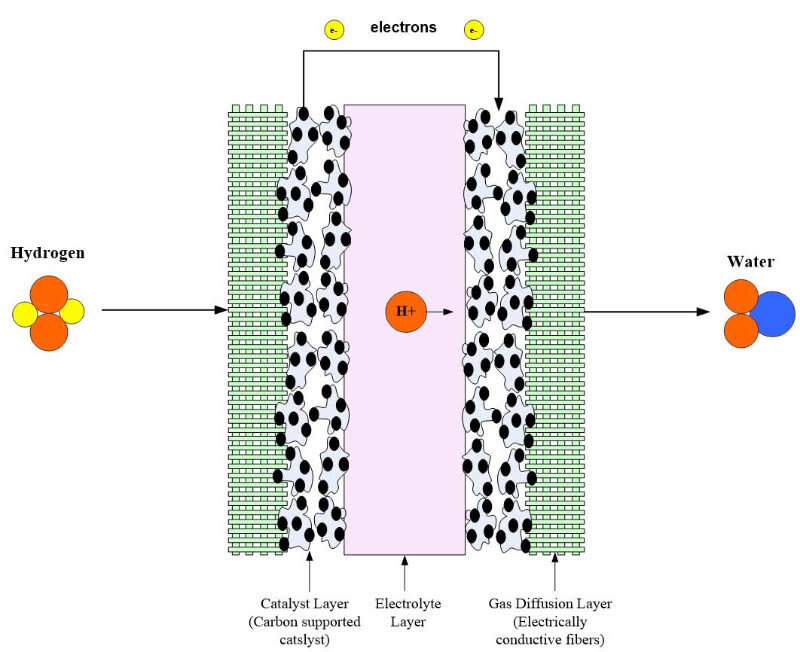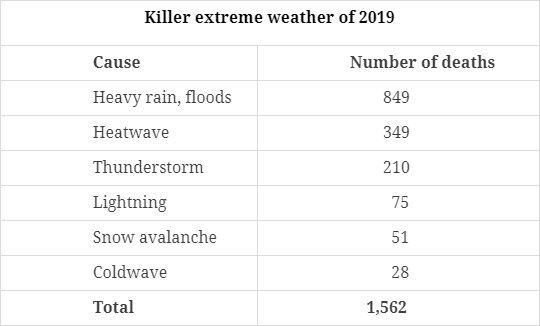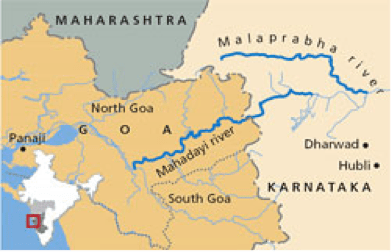Protecting Power
Why in News?
An American drone has killed Iranian military and intelligence commander Major General Qassem Soleimani in Baghdad (capital of Iraq). The Iranian government has registered its protest against the killing with the Embassy of Switzerland in Tehran.
- Switzerland represents the interests of the US in Iran (capital of Iran). This is because the US itself does not have an embassy there. In an arrangement such as this, Switzerland is the “Protecting Power” of the United States’ interests in Iran.
- Iran’s interests in the United States, on the other hand, are represented by the Pakistan Embassy in Washington.
How is the Above Arrangement Possible?
- The instrument of Protecting Powers is provided for under the 1961 and 1963 Vienna Conventions on Diplomatic Relations.
- The 1961 Vienna Convention states that if diplomatic relations are broken off between two States, or if a mission is permanently or temporarily recalled, the sending State may entrust the protection of its interests and those of its nationals to a third State acceptable to the receiving State. E.g.:
- In this case, where Switzerland is the “Protecting Power” of the United States’ interests in Iran, sending state would be US, third state would be Switzerland; and receiving state would be Iran.
- The 1963 Convention reiterates that a sending State may with the prior consent of the receiving State, and at the request of a third State not represented in the receiving State, undertake the temporary protection of the interests of the third State and of its nationals.”
- The Vienna Convention on Diplomatic Relations, 1961 provides a complete framework for the establishment, maintenance and termination of diplomatic relations on the basis of consent between independent sovereign States.
Vienna Convention on Diplomatic Relations, 1961
- The Convention was adopted on 14 April 1961 by the United Nations Conference on Diplomatic Intercourse and Immunities held at the Neue Hofburg in Vienna, Austria, from 2 March to 14 April 1961. India has ratified the convention.
- It sets out the special rules – privileges and immunities – which enable diplomatic missions to act without fear of coercion or harassment through enforcement of local laws and to communicate securely with their sending Governments.
- It makes provision for withdrawal of a mission – which may take place on grounds of economy or physical security – and for breach of diplomatic relations which may occur in response to abuse of immunity or severe deterioration in relations between sending and receiving States. In either of these cases – or where permanent missions have not been established – a framework is provided for the interests of each sending State to be protected in the receiving State by a third State.
Scientific Social Responsibility Policy
Why in News
107th Indian Science Congress considered the importance of communication and community outreach programmes to make people aware of scientific research.
- The Department of Science and Technology also mentioned about the Centre’s policy on implementing Scientific Social Responsibility (SSR).
Scientific Social Responsibility
- Definition:
- Scientific Social Responsibility (SSR) is the confluence of scientific knowledge with visionary leadership and social conscience.
- It is about building synergies among all stakeholders in scientific knowledge community and also about developing linkages between science and society.
- Need:
- The SSR policy will facilitate easy access to resources and knowledge about the investments and impacts of Science and Technology (S&T) on society.
- It would inculcate moral responsibility amongst the scientific community which may trigger social entrepreneurship and start-ups impacting S&T ecosystem and society.
- Objectives:
- It aims to harness the voluntary potential in the country’s scientific community to strengthen science and society linkages.
- This primarily involves bridging science-society, science-science and society-science gaps, thereby bringing trust, partnership and responsibility of science at an accelerated peace towards achieving social goals.
- SSR Policy:
- Under the programme, researchers who are working on a science project funded by any of the Ministries under the Central government will have to undertake activities to popularise science and make it more accessible to the public.
- It will include a range of activities like delivering lectures in educational institutes, writing an article in a magazine or doing something beyond the curriculum.
- The science outreach would be mandatory and researchers had to include this as part of their outcome report.
- Soon the government will list activities that could be taken up under the Scientific Social Responsibility programme that was similar to Corporate Social Responsibility (CSR).
Railways Plans Hydrogen-Powered Engine by 2021
Why in News
During the 107th Indian Science Congress, the Indian Railways has announced that it will build a hydrogen-powered rail engine by the end of 2021.
- The Indian Railways Organisation for Alternate Fuels (IROAF) will be developing a hydrogen-powered rail engine — a technology that has been demonstrated successfully only in Germany so far.
Key Points
- The proposed train will have four passenger coaches operating at 75 km/hr speed.
- One coach will carry the hydrogen gas cylinders, fuel cells, supercapacitors and DC converters.
- Hydrogen will be the input to the fuel cell and the power output of the fuel cell will drive the train.
- The next phase is to generate hydrogen on board the train from water. This means that water will be converted into hydrogen through water splitting technologies and hydrogen will then be used as the input for fuel cells.
- Hydrogen-powered rail engine will help to reduce reliance on fossil fuel-based energy sources like diesel and electricity and to find alternative sources of fuel to power its trains.
- Fuel cells are electrochemical devices that convert chemical energy from the reactants directly into electricity and heat.
- The device consists of an electrolyte layer in contact with a porous anode and cathode on either side.
- In a standard fuel cell, gaseous fuels are fed continuously to the anode (negative electrode), while an oxidant (oxygen from the air) is fed continuously to the cathode (positive electrode). Electrochemical reactions take place at the electrodes to produce an electric current.
Statement on Climate of India during 2019: IMD
Why in News
The India Meteorological Department (IMD) has released the ‘Statement on Climate of India during 2019’.
Key Findings
- Deaths due to weather extremes: 2019 was a year of extremes – heat, cold, rain, and cyclones for India, killing a total of 1,562 people. Last year, the total number of deaths caused due to similar weather vagaries was 1,428.
- The state-wise death toll caused due to various extreme weather events: Maharashtra (231), Jharkhand (138), Uttar Pradesh (135), Rajasthan ( 94), Kerala ( 86), Odisha (64), Jammu and Kashmir, Ladakh ( 51), Karnataka (43), Himachal Pradesh (27) and Madhya Pradesh (24).
- Rainfall: The rainfall amounts during both the southwest monsoon (June to September) and northeast monsoon (October to December) remained 109% of the Long Period Average (LPA). That is, the country recorded excess rainfall during the entire year, making it an extremely wet year in recent times, when both monsoons reported above normal rain for the seasons.
- Long Period Average is a 50 year average of India’s monsoon rains. The current LPA is 89 cm, based on the average rainfall over the years 1951 and 2000.
- Rise in Temperature
- The mean temperatures remained 0.36 degrees above normal, making 2019 the seventh hottest year ever recorded.
- The decade 2011 – 2019 remained the warmest on record for the country, when the annual mean temperature remained 0.36 degree above normal.
- Since 1901, India has warmed by 1 degree Celsius. Whereas, the rise in minimum temperature was 0.22 degrees in the century.
- Number of Cyclones: 2019 was exceptional for the number of cyclones that hit India’s east and west coasts.
- Previously, similar cyclonic activity was reported in the Indian Ocean only during 1893, 1926, 1930, and 1976. During these years, cyclones formed both in the Arabian Sea and the Bay of Bengal put together numbered to ten in a calendar year.
- Notably, an active Arabian Sea saw more cyclonic storms than the Bay of Bengal during 2019. It was only for the second time in 117 years that the Arabian Sea saw such intense and frequent cyclones.
- In 2019, eight cyclonic storms formed over the north Indian Ocean, of these, five — Cyclones Vayu, Hikka, Kyarr, Maha and Pavan originated in the Arabia Sea, which is normally calmer. On the contrary, the Bay of Bengal reported less than normal number of cyclones. The three cyclones formed here were — Cyclones Pabuk, Fani, Bulbul.
- The Bay of Bengal sees an average of five cyclones each year, making 2019 a year when the Arabian Sea dominated.
- Coldest Winter
- The winter of 2018-2019 was one of the coldest in the northern hemisphere.
- Jammu and Kashmir, Ladakh reported 51 deaths triggered by snow avalanche in 2019.
India Meteorological Department
- IMD was established in 1875.
- It is an agency of the Ministry of Earth Sciences of the Government of India.
- It is the principal agency responsible for meteorological observations, weather forecasting and seismology
2nd National GST Conference
Why in News
The 2nd National GST Conference of the Commissioners of State Tax and Chief Commissioners of Central Tax was held recently.
- The conference was focused on streamlining Goods and Services Tax (GST) system and plugging revenue leakages.
- The conference was aimed to build synergy and to share their knowledge and best practices with the intent to bring about uniformity in tax administrations.
Key Points
- The government has decided to constitute a panel of centre and state officials for designing a detailed Standard Operating Procedure (SOP) to check fraudulent GST refund claims and evasion of GST.
- A memorandum of understanding would be signed among the Central Board of Direct Taxes (CBDT), the Central Board of Indirect Taxes and Customs (CBIC) and the GST Network to exchange data through the application program interface.
- The data would be shared on a quarterly basis, instead of being shared on a yearly basis.
- It was also decided to make the GST system aligned with the Financial Intelligence Unit (FIU) for the purpose of getting bank account details and transactions and also PAN-based banking transaction.
Financial Intelligence Unit
- The Financial Intelligence Unit (FIU) was constituted in November 2004. The organization is in the process of seeking membership of the Egmont Group of FIUs which is an umbrella group of FIUs of various countries.
- FIU is not a regulatory body. Its task is to gather and share financial intelligence in close cooperation with regulatory bodies like RBI, SEBI and IRDA.
Mhadei Wildlife Sanctuary
- Mhadei Wildlife Sanctuary is located in North Goa District, Sanguem taluka near the town of Valpoi. Owing to the presence of Bengal Tigers, it can be declared as a tiger reserve under Project Tiger.
- It has been declared an International Bird Area because of the presence of the Nilgiri wood-pigeon, Malabar parakeet, Malabar grey hornbill, Grey-headed Bulbul, Rufous babbler, White-bellied blue-flycatcher and Crimson-backed sunbird.
- The sanctuary is a huge attraction for herpetologists( Study of amphibians and reptiles). since it contains a large variety of snakes including all of the ‘big four’ of Indian venomous snakes which are Indian krait, Russell’s viper, Saw-scaled viper and Spectacled cobra.
- This sanctuary was formed in 1999. The formation of this sanctuary has made Goa the only state in India that has completely protected the Western Ghats that are located within its boundaries.
- The three highest peaks in Goa are situated in the hill ranges of the sanctuary. They are Sonsogod (1027 mts), Talavche Sada (812 mts) and Vageri (725 mts). Vageri means ‘the abode of the tiger’.
- The Mhadei River, known downstream as the Mandovi River, the lifeline of the state of Goa, originates in Karnataka, passes through the Mhadei Wildlife Sanctuary and meets the Arabian Sea at Panaji in Goa.
- The whole sanctuary acts as a catchment for the river. Most of the area has succumbed to the biotic pressure with agriculture and human interference replacing the rich natural vegetation of the past by cashew / kumeri cultivation.
New Energy Performance Standards for Air Conditioners
Why in News
The Central Government in consultation with the Bureau of Energy Efficiency (BEE) has notified new energy performance standards for Room Air Conditioner (RACs).
- The 240C default setting has been made mandatory from 1st January, 2020 for all room air conditioners covered under the ambit of BEE star-labelling program.
- BEE launched the voluntary star labelling program for fixed-speed room air conditioners (RACs) in 2006, and this program became mandatory on 12th January 2009. Thereafter, in 2015, voluntary star labelling program for inverter room air conditioners was launched and was made mandatory with effect from 1st January 2018.
Bureau of Energy Efficiency (BEE)
- BEE is a statutory body under the Ministry of Power, Government of India.
- It assists in developing policies and strategies with the primary objective of reducing the energy intensity of the Indian economy.
- BEE coordinates with designated consumers, designated agencies, and other organizations to identify and utilize the existing resources and infrastructure, in performing the functions assigned to it under the energy conservation act.



